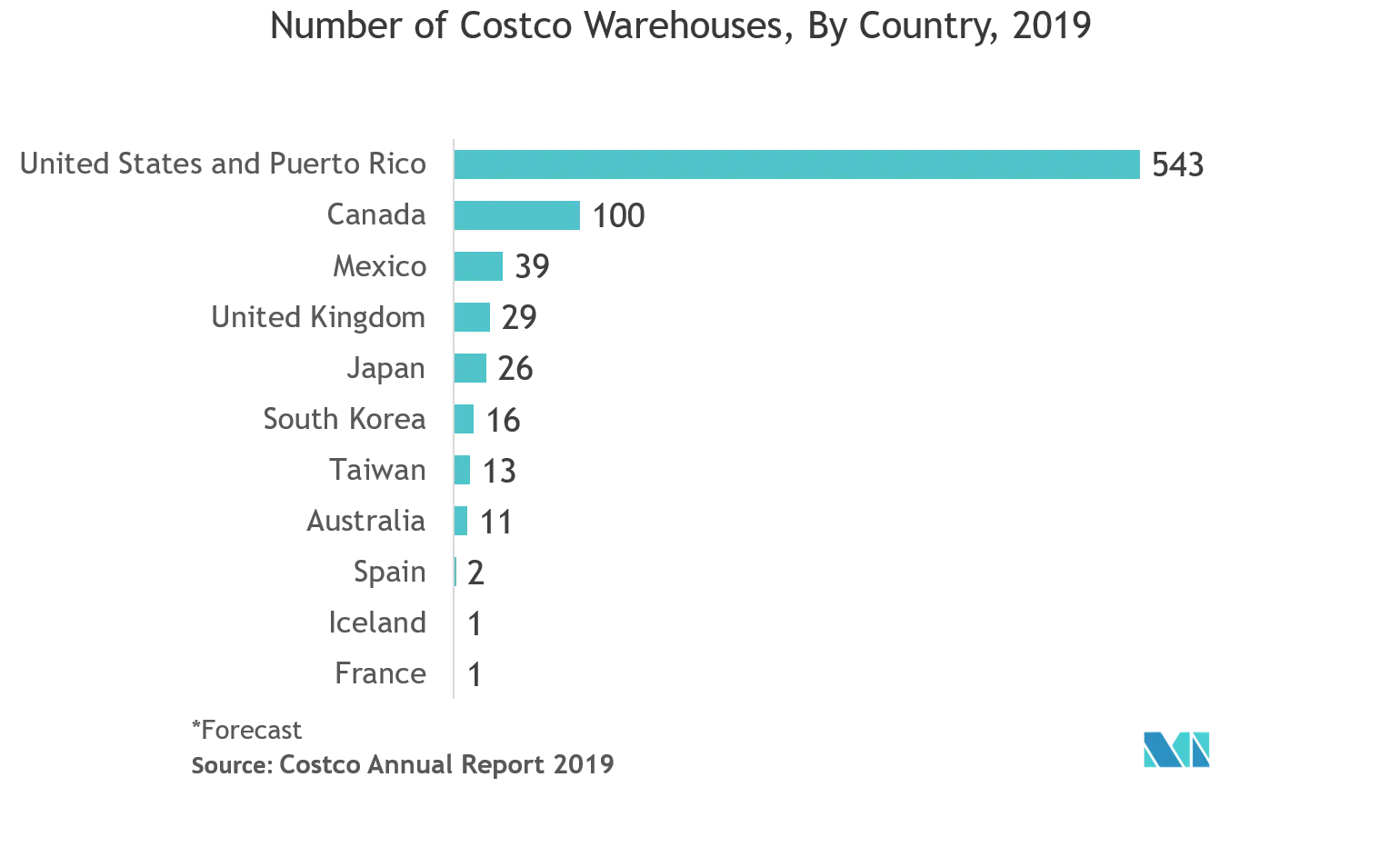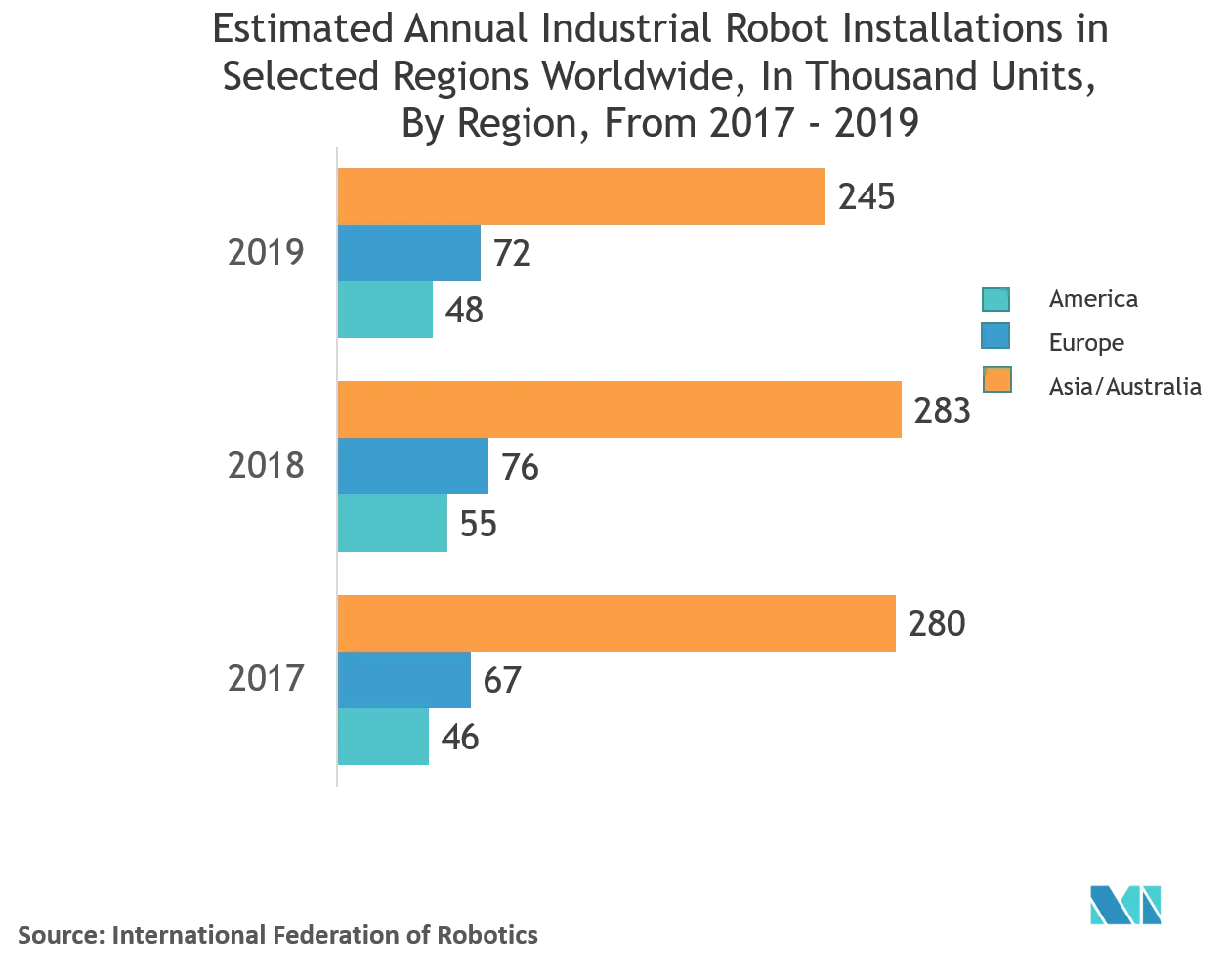Market Trends of Asia Pacific Warehouse Robotics Industry
This section covers the major market trends shaping the APAC Warehouse Robotics Market according to our research experts:
Automated Storage and Retrieval Systems are Expected to Grow Significantly
- In China, automation is occurring at a rapid rate, despite the wage rate being lower (compared to European nations and North America, since there has been an increase in wage rate over the past decade), and this is expected to continue for the next decade.
- Moreover, with the 2020 Olympics scheduled to take place in Japan, the International Air Transport Association (IATA) called on the country to prepare its airport infrastructure. These factors are leading to an increased need for baggage picking, thus augmenting the market growth.
- South Korean government is planning to turn the nation’s robotics technology into a USD 13.3 billion industry, with the aim of becoming the fourth-largest player in the world by 2023. The Ministry of Trade, Industry, and Energy announced in March 2019 that it would finance the distribution of 7,560 manufacturing robots to replace human workforces in the areas of textiles, foods, and beverages that have been losing workers, due to hostile work environments and work intensity. ASR Systems are majorly used in huge warehouses for efficient storage and retrieval and are expected to grow in numbers as the rate of automation grows in the region.
- Japan has been among the early adopters of these solutions for its focus on efficiency improvement in the industry and across its supply chain. An increase in infrastructure investment by the government and investments from industries, along with the ‘Make in India’ initiative, are expected to drive the demand for AS/RS systems.
- Indonesia is categorized as an aggressive automation-adopting nation. The country has recorded increased robotic usage for industrial work. Since Japan is both its supplier and consumer, Indonesia is expected to benefit from the trade with Japan. Thus increasing the demand for automation in the region.
- Moreover, the increasing automation in the industrial sector and the growing demand for cost-effective material-handling systems are the two major driving factors for the global conveyor market. Growth in the automotive, retail, and food and beverage industries is also likely to fuel the growth of roller conveyer belts. Owing to the increasing need for roller-type conveyor systems, companies are trying to differentiate by providing more efficient systems. For instance, Interroll, in February 2019, presented new tapered elements for curved roller conveyors. The tapered elements, which offer optimized fixing, are currently being made available in Europe. The company also plans to launch these in the United States and Asia.

South Korea is Expected to Grow Significantly
- South Korea’s population is aging rapidly, and by the middle of this century, it will have one of the oldest populations out of all Organisation for Economic Co-operation and Development countries, just behind Japan, Italy, and Greece. Due to this, most of the manufacturing units are implementing industrial robots to maintain competitiveness.
- This also explains why South Korea has already embraced robots, particularly in its manufacturing sector, where “robot density” ranks second place in the world, following Singapore. With 774 industrial robots per 10,000 employees, the Republic of Korea has more than twice the number of Germany (3rd with 338 units) and Japan (4th with 327 units).
- The South Korean government’s measures ensure to boost the country’s small and mid-size manufacturing companies, including the establishment of 30,000 smart factories by 2022. The government expects that small and mid-size firms in the manufacturing industry will create 66,000 jobs by automating 50% of their manufacturing facilities and increase KRW 18 trillion (USD 16 billion) of sales.
- In addition, the government has supported the establishment of 7,800 smart factories until 2018 and has allocated KRW 1.21 trillion (USD 1.07 billion) to innovate small and mid-size smart manufacturing facilities in 2019. The Ministry of SMEs and Startups will first provide a total of KRW 2 trillion (USD 1.78 billion) in funds to be used in facility investments for smart factories. Policy lenders Korea Development Bank will provide KRW 1 trillion (USD 888.89 million), Industrial Bank of Korea KRW 500 billion (USD 444.45 million), and Small and Medium Business Corporation KRW 500 billion (USD 444.45 million).
- Owing to strong technological and mobile adoption, the country is one of the biggest e-commerce markets worldwide, with over 25 million e-shoppers in the country; South Korea stands third in GDP rankings. The vendors in the market are collaborating to develop robotic systems for the retail industry due to the rising demand for online services in the country.
- LG Electronics Inc. has partnered with a Korean retail outlet, E-mart Inc., that will result in the development of automated AI-driven shopping cart-like robots. The partnership encompasses nearly every aspect of development on the retail service robots with the goal of eliminating the need for any given shopper to push around a shopping cart.

